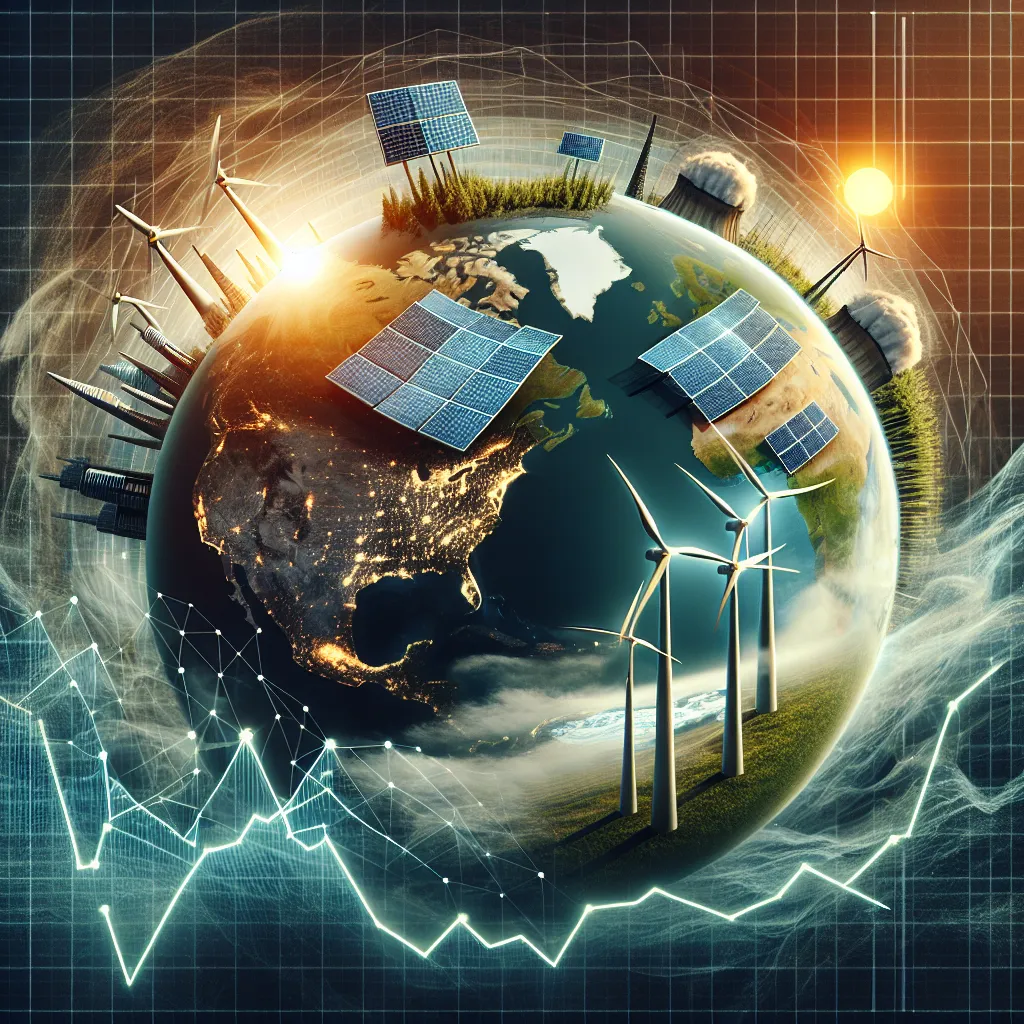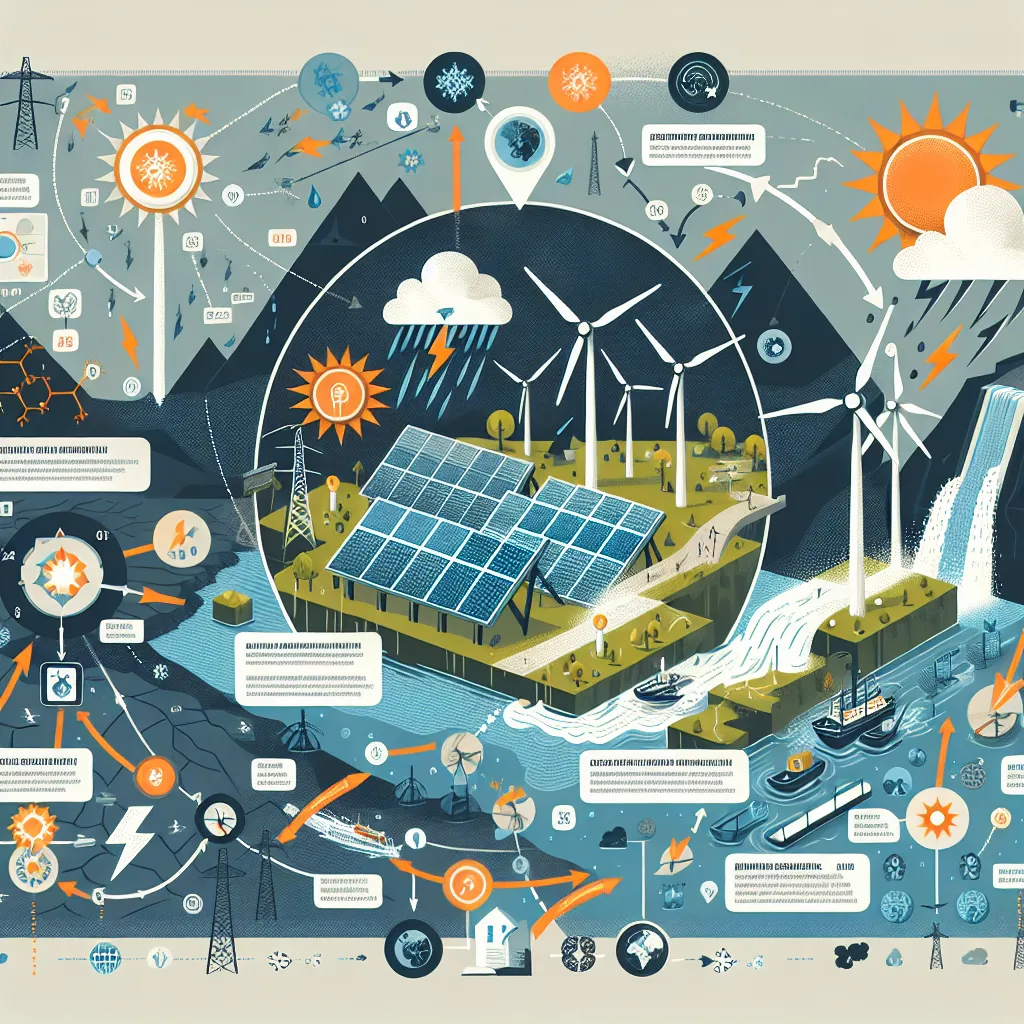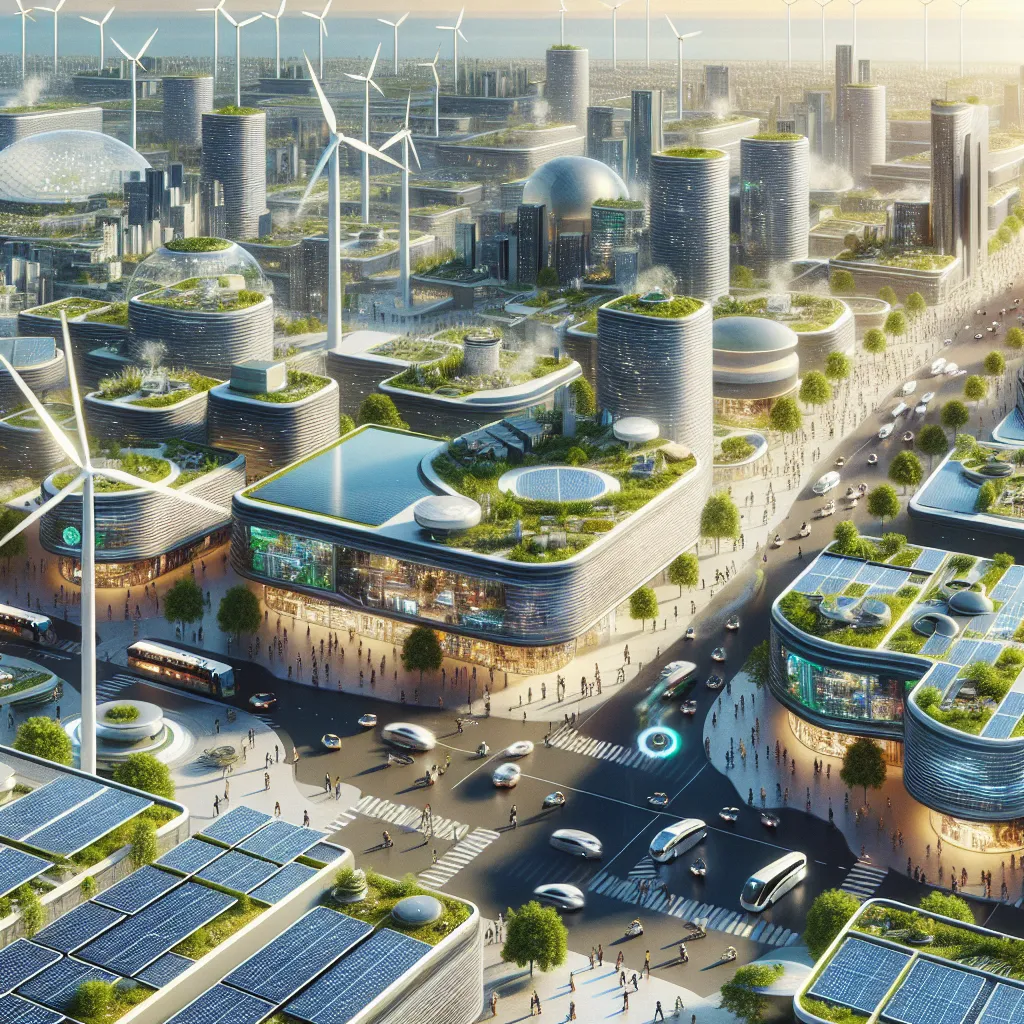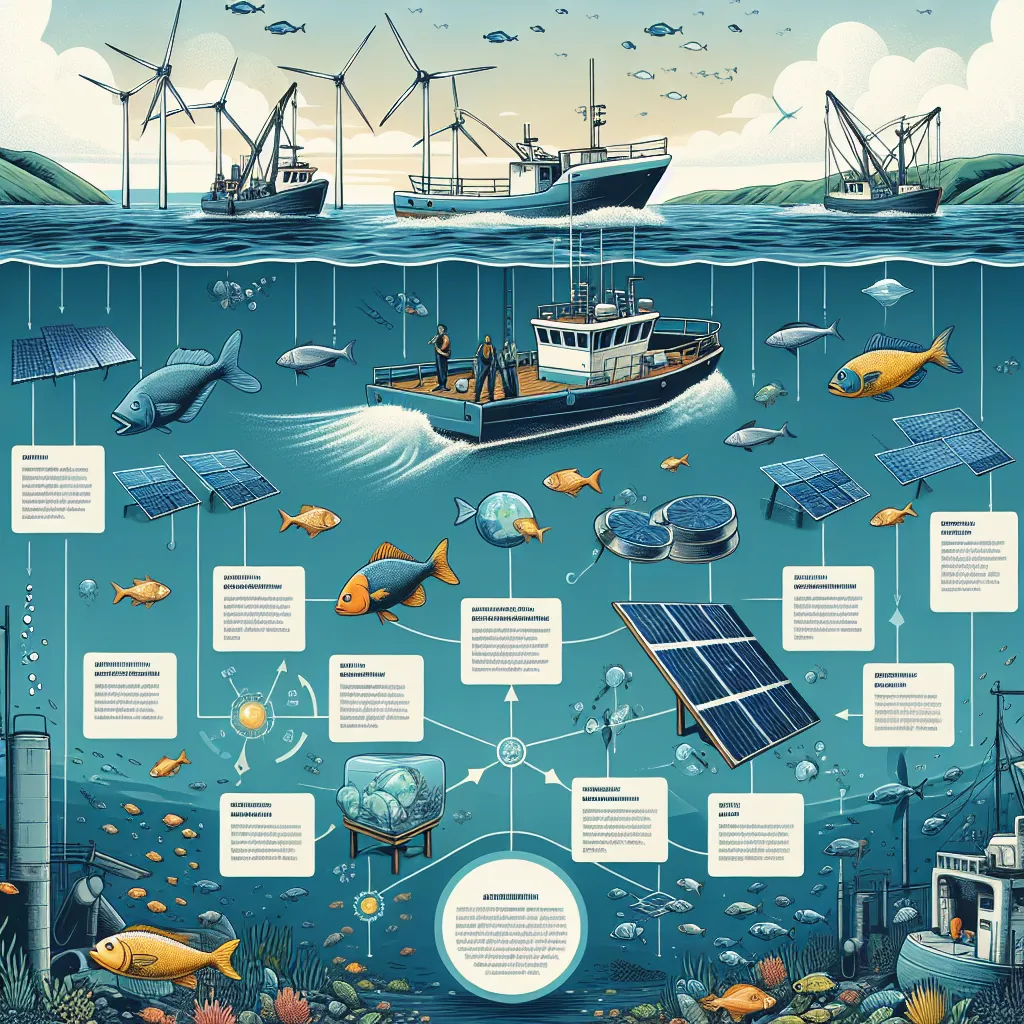In this IELTS Reading practice, we’ll explore the crucial topic of “How clean energy is reducing global carbon footprints.” This subject is not only relevant for your IELTS preparation but also vital for understanding the global efforts to combat climate change. Let’s dive into a comprehensive reading exercise that mirrors the actual IELTS test format, complete with passages of varying difficulty levels and a diverse range of question types.
Nội dung bài viết
 Clean Energy Reducing Carbon Footprints
Clean Energy Reducing Carbon Footprints
IELTS Reading Test
Passage 1 – Easy Text
The Rise of Clean Energy
Clean energy, also known as renewable energy, has been gaining traction worldwide as a sustainable alternative to fossil fuels. Sources such as solar, wind, hydroelectric, and geothermal power are becoming increasingly popular due to their minimal impact on the environment. Unlike traditional energy sources, clean energy produces little to no greenhouse gases, making it a crucial tool in the fight against climate change.
One of the most significant advantages of clean energy is its ability to reduce carbon footprints. A carbon footprint refers to the total amount of greenhouse gases produced by an individual, organization, or country. As clean energy technologies become more efficient and widespread, they are gradually replacing fossil fuel-based power plants, leading to a substantial decrease in carbon emissions.
Solar power, for instance, has seen remarkable growth in recent years. The cost of solar panels has dropped significantly, making them more accessible to both homeowners and businesses. Countries like China, the United States, and Germany have invested heavily in solar infrastructure, resulting in a notable reduction in their carbon emissions.
Wind energy is another clean energy source that has shown impressive progress. Wind farms, both onshore and offshore, are becoming increasingly common sights around the world. Countries like Denmark and the United Kingdom have made significant strides in harnessing wind power, with wind turbines now generating a substantial portion of their electricity needs.
The transition to clean energy is not without challenges. Intermittency issues, where energy production varies depending on weather conditions, require innovative solutions such as improved energy storage technologies. However, ongoing research and development in this field are rapidly addressing these concerns.
As more countries commit to ambitious climate goals, the role of clean energy in reducing global carbon footprints becomes increasingly crucial. The shift towards renewable sources not only helps combat climate change but also promotes energy independence and creates new job opportunities in the green energy sector.
Questions 1-7
Do the following statements agree with the information given in the passage?
Write
TRUE if the statement agrees with the information
FALSE if the statement contradicts the information
NOT GIVEN if there is no information on this
- Clean energy produces significant amounts of greenhouse gases.
- The cost of solar panels has increased in recent years.
- Denmark and the United Kingdom are leaders in wind energy production.
- Intermittency is a major challenge for clean energy sources.
- Clean energy promotes energy dependence on other countries.
- The green energy sector is creating new job opportunities.
- All countries have committed to ambitious climate goals.
Questions 8-10
Complete the sentences below.
Choose NO MORE THAN TWO WORDS from the passage for each answer.
- A refers to the total amount of greenhouse gases produced by an entity.
- have become more accessible to homeowners and businesses due to cost reductions.
- Improved technologies are needed to address the intermittency issues of clean energy sources.
Passage 2 – Medium Text
The Global Impact of Clean Energy on Carbon Reduction
The transition to clean energy is having a profound impact on global carbon emissions. As countries around the world increasingly adopt renewable energy sources, we are witnessing a significant shift in the global energy landscape. This shift is not only reshaping how we produce and consume energy but is also playing a crucial role in mitigating the effects of climate change.
One of the most notable impacts of clean energy adoption is the decarbonization of the electricity sector. Traditionally, power generation has been one of the largest contributors to global carbon emissions. However, as more countries integrate solar, wind, and other renewable sources into their energy mix, we are seeing a marked decrease in carbon output from this sector. For instance, the European Union has reported a 35% reduction in greenhouse gas emissions from electricity production between 1990 and 2019, largely attributed to the increased use of renewable energy.
The ripple effect of clean energy adoption extends beyond just the power sector. As electricity grids become cleaner, other industries are leveraging this to reduce their own carbon footprints. The transportation sector, for example, is undergoing a significant transformation with the rise of electric vehicles (EVs). These vehicles, when charged with electricity from renewable sources, can dramatically reduce emissions compared to their fossil fuel counterparts. Countries like Norway, where over 50% of new car sales are electric, are leading the way in this transition.
Moreover, the adoption of clean energy is catalyzing innovation in energy storage technologies. As renewable sources like solar and wind are intermittent by nature, efficient energy storage is crucial for maintaining a stable power supply. Advancements in battery technology, particularly lithium-ion batteries, are making it possible to store large amounts of renewable energy for use during peak demand periods or when renewable sources are not generating power.
The economic implications of the clean energy transition are also significant. While there are upfront costs associated with building renewable energy infrastructure, the long-term benefits are substantial. Clean energy sources typically have lower operational costs compared to fossil fuels, and their prices continue to decline as technology improves. This economic advantage is driving further adoption, creating a virtuous cycle of reduced emissions and lower energy costs.
On a global scale, international cooperation plays a crucial role in accelerating the adoption of clean energy. Initiatives like the Paris Agreement have set ambitious targets for reducing greenhouse gas emissions, with many countries pledging to achieve net-zero emissions by mid-century. These commitments are driving investment in clean energy technologies and infrastructure, further accelerating the transition away from fossil fuels.
However, challenges remain in fully realizing the potential of clean energy to reduce global carbon footprints. Energy access inequality persists, with many developing countries still heavily reliant on fossil fuels. Addressing this disparity through technology transfer and financial support will be crucial for achieving global climate goals.
In conclusion, the impact of clean energy on reducing global carbon footprints is multifaceted and far-reaching. From transforming electricity generation to revolutionizing transportation and driving technological innovation, clean energy is at the forefront of the global fight against climate change. As we continue to innovate and collaborate on a global scale, the potential for clean energy to dramatically reduce our carbon footprint becomes increasingly evident.
Questions 11-15
Choose the correct letter, A, B, C, or D.
-
According to the passage, what is one of the most significant impacts of clean energy adoption?
A) Increased energy consumption
B) Decarbonization of the electricity sector
C) Higher energy costs
D) Reduced energy efficiency -
How has the European Union’s greenhouse gas emissions from electricity production changed between 1990 and 2019?
A) Increased by 35%
B) Decreased by 35%
C) Remained the same
D) The passage doesn’t specify -
What percentage of new car sales in Norway are electric?
A) Less than 25%
B) Exactly 35%
C) Over 50%
D) 100% -
What is described as crucial for maintaining a stable power supply from renewable sources?
A) Fossil fuel backup
B) Nuclear energy
C) Efficient energy storage
D) Constant sunlight -
According to the passage, what is driving further adoption of clean energy?
A) Government mandates
B) Public pressure
C) Economic advantages
D) Environmental concerns only
Questions 16-20
Complete the summary below.
Choose NO MORE THAN TWO WORDS from the passage for each answer.
The adoption of clean energy is having a significant impact on reducing global carbon footprints. This transition is not only affecting the electricity sector but also has a (16) on other industries. For example, the transportation sector is seeing a rise in (17) , which can greatly reduce emissions when charged with renewable electricity. The clean energy transition is also driving innovation in (18) , which is crucial for managing the intermittent nature of some renewable sources. While there are challenges, such as (19) in developing countries, international cooperation through initiatives like the (20) is helping to accelerate the global adoption of clean energy.
Passage 3 – Hard Text
The Synergy of Clean Energy Technologies in Carbon Footprint Reduction
The global imperative to reduce carbon footprints has catalyzed a paradigm shift in energy production and consumption patterns. This transformation is underpinned by the synergistic deployment of various clean energy technologies, each contributing uniquely to the overarching goal of mitigating climate change. The intricate interplay between these technologies not only amplifies their individual impacts but also creates a robust, resilient, and increasingly decarbonized energy ecosystem.
At the forefront of this clean energy revolution is the photovoltaic (PV) technology, which has undergone remarkable advancements in recent years. The efficiency of solar cells has seen exponential improvements, with perovskite-silicon tandem cells achieving conversion rates exceeding 29%, a significant leap from the 15-20% efficiency of standard silicon cells. This enhanced efficiency, coupled with dramatic cost reductions, has positioned solar energy as a cornerstone of global decarbonization efforts. Large-scale solar farms are now commonplace, while innovative applications such as building-integrated photovoltaics (BIPV) are transforming urban landscapes into power generation hubs.
Complementing solar energy, wind power has emerged as another pillar in the clean energy portfolio. The evolution of wind turbine technology has been equally impressive, with the development of larger, more efficient turbines capable of harnessing wind energy at unprecedented scales. Offshore wind farms, in particular, have shown tremendous potential, capitalizing on stronger, more consistent wind patterns at sea. The floating offshore wind technology is pushing the boundaries further, allowing wind farms to be installed in deeper waters, thus expanding the global capacity for wind energy generation.
The intermittency challenge inherent to solar and wind energy is being addressed through advancements in energy storage technologies. Grid-scale battery storage systems, primarily utilizing lithium-ion technology, have seen rapid deployment, enabling the integration of higher proportions of variable renewable energy into the grid. Moreover, emerging technologies such as flow batteries and solid-state batteries promise even greater storage capacities and longer durations, potentially revolutionizing the way we manage and distribute clean energy.
Hydrogen, often termed the ‘missing link’ in the clean energy transition, is gaining traction as a versatile energy carrier. Green hydrogen, produced through electrolysis powered by renewable energy, offers a solution for sectors that are difficult to electrify directly, such as heavy industry and long-distance transportation. The development of more efficient electrolyzers and the scaling up of production facilities are rapidly bringing down the costs of green hydrogen, making it an increasingly viable option for decarbonization.
The smart grid concept is emerging as the connective tissue that binds these various clean energy technologies into a cohesive, efficient system. Leveraging advanced sensors, Internet of Things (IoT) devices, and artificial intelligence, smart grids enable real-time monitoring and optimization of energy production, distribution, and consumption. This intelligent management system not only enhances the integration of renewable energy sources but also empowers consumers to actively participate in energy management, further reducing overall carbon footprints.
In the realm of transportation, the synergy between clean energy technologies is particularly evident. Electric vehicles (EVs), charged with renewable electricity, are dramatically reducing emissions from the transport sector. The development of vehicle-to-grid (V2G) technology is taking this a step further, allowing EVs to serve as distributed energy storage units, supporting grid stability and facilitating higher penetration of renewable energy.
The circular economy principles are being increasingly applied to clean energy technologies, addressing concerns about resource depletion and waste management. Innovations in recycling solar panels, wind turbine blades, and batteries are not only reducing the environmental impact of these technologies but also creating new value chains and economic opportunities.
However, the transition to a clean energy-powered, low-carbon future is not without challenges. The intermittency of renewable sources, grid integration complexities, and the need for massive infrastructure investments are significant hurdles. Moreover, ensuring a just transition that addresses socio-economic disparities and supports communities dependent on fossil fuel industries is crucial for the long-term sustainability of this shift.
In conclusion, the synergistic deployment of clean energy technologies is proving to be a powerful force in reducing global carbon footprints. As these technologies continue to evolve and integrate, their collective impact on mitigating climate change is expected to accelerate. The path forward requires sustained innovation, strategic policy support, and global cooperation to fully harness the potential of clean energy in creating a sustainable, low-carbon future.
Questions 21-26
Complete the sentences below.
Choose NO MORE THAN TWO WORDS from the passage for each answer.
- cells have achieved conversion rates exceeding 29% efficiency.
- wind technology allows for the installation of wind farms in deeper waters.
- ___ batteries are an emerging technology that promises greater storage capacities.
- , produced through electrolysis powered by renewable energy, is gaining traction as a versatile energy carrier.
- technology allows electric vehicles to support grid stability.
- The principles of the are being applied to address concerns about resource depletion and waste management in clean energy technologies.
Questions 27-30
Choose FOUR letters, A-H.
Which FOUR of the following are mentioned in the passage as challenges in the transition to a clean energy-powered, low-carbon future?
A) Intermittency of renewable sources
B) Lack of public interest
C) Grid integration complexities
D) Oversupply of clean energy
E) Need for massive infrastructure investments
F) Excessive government regulation
G) Ensuring a just transition
H) Shortage of skilled workers
Questions 31-35
Do the following statements agree with the information given in the passage?
Write
TRUE if the statement agrees with the information
FALSE if the statement contradicts the information
NOT GIVEN if there is no information on this
- Photovoltaic technology has seen significant improvements in efficiency and cost reduction.
- Offshore wind farms are less efficient than onshore wind farms.
- Smart grids rely solely on artificial intelligence for energy management.
- Electric vehicles can only be charged with renewable electricity.
- The circular economy approach to clean energy technologies is creating new economic opportunities.
Answer Key
Passage 1 – Easy Text
-
FALSE
-
FALSE
-
TRUE
-
TRUE
-
FALSE
-
TRUE
-
NOT GIVEN
-
carbon footprint
-
Solar panels
-
energy storage
Passage 2 – Medium Text
-
B
-
B
-
C
-
C
-
C
-
ripple effect
-
electric vehicles
-
energy storage
-
energy access inequality
-
Paris Agreement
Passage 3 – Hard Text
-
Perovskite-silicon tandem
-
Floating offshore
-
Solid-state
-
Green hydrogen
-
Vehicle-to-grid
-
circular economy
-
A, C, E, G
-
TRUE
-
NOT GIVEN
-
FALSE
-
FALSE
-
TRUE
Conclusion
This IELTS Reading practice test on “How clean energy is reducing global carbon footprints” provides a comprehensive exploration of the topic while testing various reading skills. Remember to manage your time effectively during the actual test, allocating about 20 minutes for each passage. Pay close attention to keywords and practice skimming and scanning techniques to quickly locate relevant information.
For further practice on related topics, you might find these articles helpful:
- How Renewable Energy is Transforming Agriculture
- Impact of AI on Reducing Carbon Emissions
- The Role of Public Transportation in Reducing Greenhouse Gases
Keep practicing regularly to improve your reading speed and comprehension. Good luck with your IELTS preparation!


